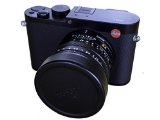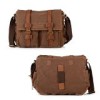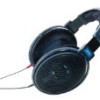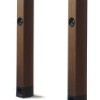Leica Q (Typ 116), black anodized Reviews
Leica Q (Typ 116), black anodized
- 24.2 MP Full-Frame CMOS Sensor Leica Maestro II Image Processor
- Leica Summilux 28mm f/1.7 ASPH Lens 3.68 MP LCOS Electronic Viewfinder
- 3.0″ 1,040k-Dot Touchscreen LCD Monitor Contrast-Detect AF System
- Full HD 1080p Video at up to 60 fps ISO 50,000 & 10 fps Continuous Shooting
- Aluminum & Magnesium Alloy Body Design Built-In Wi-Fi Connectivity with NFC
A no compromise compact, the Leica Q (Typ 116) Digital Camera wields a full-frame 24.2-megapixel CMOS sensor within its exceptionally portable, and beautiful, body. Leveraging the power of the Leica Maestro II series image processor, high-resolution, low-noise imaging is possible at sensitivities up to ISO 50,000 and at a continuous rate of 10 fps. Also, the camera utilizes a Summilux 28mm f/1.7 ASPH. lens to allow users to dramatically separate the subject from the background as well as work in
List Price: $ 4,739.95
Price:
Find More Leica Products
Similar Posts






LOVE IT..LOVE IT..LOVE IT!,
I want to preface this review by stating that this is a review of the camera and that in no way is this an endorsement for the rip-off pricing being sought by several sellers. Buyer beware that these cameras may not have any warranty other than the seller’s warranty and since they cant obtain parts or most likely can’t repair this camera that may not be worth much should you have a problem. I have written and posted my review to help those considering purchasing this camera from a legitimate Leica source or prior owner.
My Review of the Leica Q
I have now owned the Leica Q for about three weeks and I have been using it almost daily. In the past, I have owned numerous digital cameras including one DSLR (I also owned several film cameras but they are only tangentially relative to this discussion). Several were very nice cameras but for a variety of reasons I did not keep them. Within the Leica brand I have owned the M8, the X-Vario and the T. None of those met my needs or expectations. In all fairness to the M8, in addition to the numerous known issues discussed on DPR and LUF, I have to add my age related declining vision is just not good enough to rapidly focus a range finder, especially in low light or high contrast situations. This isn’t the camera’s fault but is a fault of the optical range finder design that has plagued many others besides me.
CONCLUSION
This is going to come as a shock to many of you but: I LOVE IT, LOVE IT, LOVE IT! I thought I would get this out first so you can stop reading if you chose.
This is the first digital Leica that has actually met and in some ways exceeded my expectations. First, it is quick, second AF is really-really fast, the fastest I have measured beating out the Olympus EM5-II and several Panasonics. That is saying something considering the size and resolution of the sensor. The AF is very accurate with one of the lowest miss rates I have encountered and I have gone through a slew of cameras from Fuji, Sony, Olympus and Panasonic. It is up with the best of them or better.
FIRMWARE
This camera has exhibited the best software out of the box of any Leica I have tried. Fewer bugs is a good thing. The flaws it has can mostly be remedied in firmware and that is the one area Leica is slow to remedy so it is a good thing that most of these are minor irritations and not deal breakers. Leica needs to learn to listen better to their customers. We have been clamoring for years for a smaller fast AF camera similar to the CL. While it would be nice to have interchangeable lenses and more profitable to Leica in the long run, a good single focal length can suffice for many of us not using the camera in a professional setting.
ERGONOMICS
The ergonomics are the best of any camera I have handled with everything intuitive and following good photographic principals that are tried and true (aperture setting on the lens, shutter speed dial on the top plate, etc.). The simplicity of operation is excellent though not perfect. There are a few operations requiring diving into a menu that should be more readily available to be useful. For example AF mode is buried in a menu and not assigned or assignable to a dedicated button. Further, one cannot toggle a feature like touch focus to be on or off while still being able to use one point. Logically touch AF is one point with the point selected by the user rather than the camera. Therefore, it would make sense to enable or disable the touch screen as desired but not disable the shutter button from activating AF. The same can be said for face detection. In many systems you can activate or deactivate face detection separately from the other AF selections and the camera will use face detection if it can and if not revert to the other selection if the feature is activated. The result of making these deeper menu items is that they get used less frequently.
The EVF is superb and works well in bright sunlight like we have here in Southern California. The LCD is also very good and viewable even in fairly bright sunlight but I find the EVF so good that I use it much more.
IMAGE QUALITY
The image quality is simply outstanding with a crispness that is a Leica signature that I really love. As good as the XV and T were, when I compare shots taken of the same subject under similar light conditions there really is no comparison. While I don’t own an M240, from what I have seen the images are just as good in good light and better in low light. I haven’t seen a camera that produces any better image. Additionally, the dynamic range is very good and the files are very malleable in LR with both highlight recover and shadow recovery matching or beating any other camera I have tried including the Sony A7II.
NIGGLES & QUIBBLES
The following are minor things that could and should be addressed by…
Read more
Was this review helpful to you?

|True Leica Quality,
I’ve owned the Q for a couple of weeks now, and with significant usage in that time I can confidently say I am very pleased with the purchase. As is typically the case with Leica, much of the investment is in the lens…Leica produces the finest lenses in the world, period.
The new 28mm Summilux lens this camera uses is in a class by itself. Given it’s full-frame sensor and 1.7 aperture wide-open, you can capture an impressively thin DOF for a relatively wide-angle 28mm lens. Out-of-focus bokeh is smooth and pleasing to the eye. At wider apertures the subject can leap out of the creamy background giving the viewer a beautiful 3 dimensional feel.
You can shoot all day at f/1.7 and obtain that “Leica-look” with consistent and predictable micro contrast from corner to edge, and no noticeable chromatic aberration. The look a Leica lens renders is often hard to describe…but it’s a know-it-when-you-see-it type of thing. The subtle and well-coordinated color saturation and soft contrast is unique.
The color saturation and contrast in RAW photos is more rich and well distributed than it is in the Sony RX1, at least in my opinion…and the bokeh is more pleasing and softer. I owned a Sony RX1 for a few weeks a while back, but I returned it because I was unimpressed with how the lens and sensor rendered color distribution. Most everything had a subtle desaturated look to it…just sort of bland…it routinely “missed” on the vibrance of a scene. The Q’s photographs have none of those unimpressive characteristics.
The electronics in this camera are elegant in their simplicity. The menus are basic and efficient. You won’t have trouble navigating through the interface, and you won’t get lost fumbling through endless sub-menus. As is always the case with Leica, what you see is what you get. This camera is not a point-and-shoot for the novice…it assumes you know how to work your way around a camera. The camera does a great job of getting out of your way so you can concentrate on shooting.
The auto focus is good enough to do what it’s supposed to do. It’s not going to break any speed records, and it has a natural tendency to hunt somewhat in low light. But, it’s easy to get used to, and once you do it’s a pleasure to use. For shooting stationary subjects, the auto focus works well.
Manual focusing is where this camera truly shines. The focus wheel is incredibly smooth and precise, like churning through warm butter. And, Leica added the little focus foot most of their lenses have, which affords the photographer the ability to more easily turn and pull the focus ring without having to wrap your hand around the focus ring. Focus peaking works OK, although the in-focus edges do not light up as bright, shiny and obvious as a Sony.
The EVF is so nicely refined and elegant, the camera makes it quite fun (and easy) to zone focus. There is also focus magnification, which allows you to magnify the subject while you manually focus…another helpful option.
I typically dislike EVFs…they usually feel more like you’re playing a video game than composing a scene, and leave me detached from the environment. But, for what it’s worth, this is the finest EVF I’ve used (by far), with little to no image delay as you pan across a scene. It won’t be mistaken for an optical viewfinder, but it’s still a very enjoyable characteristic of the camera.
At higher ISOs the sensor struggles to keep grain and noise out of the shadows. This camera is no Sony A7s. I won’t be heading up into the ISO 10,000+ often, but I have shot many indoor photographs at ISO 3200 and the images were well-rendered with only minor noise, which was easily correctible in post-process. If you plan on shooting at higher ISOs, I recommend you shoot in RAW format.
One very small nuance: When I am shooting with a vertical orientation, sometimes my nose will accidentally bump up against the “menu” button. I do not have a big nose. I’d say it’s an average-sized nose. Not a big deal, but it just required me to take notice and be more careful when shooting vertically.
Speaking of the buttons, they are laid out in typical Leica format…easy to access and very basic in orientation. It shouldn’t take more than a few minutes to become accustomed to changing options.
The body of the camera is superbly machined out of what feels like one single chunk of metal alloy. This camera is clearly capable of surviving a drop or two…it is strong and sturdy. The lens adds some front weight to it, but that’s to be expected…and it’s not so obvious that it is in anyway annoying. The overall physical ergonomics of this camera are fantastic. It fits nicely in my average sized hands, with the buttons and dials intuitively placed. If you have larger hands, the camera may feel a bit small to grip.
The battery and SD card are…
Read more
Was this review helpful to you?

|Leica ‘Q’ Full-Frame 28 mm Fixed-Lens Digital Camera review by Dale,
This review covers my use of the new Leica Q (typ 116; ‘Q-116’ hereafter) camera for general-purpose photography, shooting JPEG format images only. This is a personal non-commercial review, so for full details of all of the camera’s options and operations, check the major photo websites reviews. Note that a small part of the $4250 USD price for this camera is for the Lightroom software included with the purchase (and free to use perpetually), downloadable from the Leica Q-116 registration site. The Q-116 isn’t directly comparable to many other premium compact cameras, primarily because of the combination of features (built-in high-res EVF, full-frame sensor, Summilux f1.7 lens etc.) in the small-ish camera body, as well as the advanced photographer options using the camera’s various control rings, switches, and buttons.
The Q-116 lens has a fixed focal length of 28 mm** and a maximum Aperture of f1.7. The ancestry of this camera includes the M9 (or ‘M’) for the full-frame sensor, the X1/X2/X-113 for the body and fixed wide-angle lens, and some collaborations with Panasonic for the high-resolution EVF. Leica previously created the X-113 as an advancement over the APS-C X1 and X2, with a new faster (and larger) f1.7 lens, in a much larger body than the X1 and X2, but with the same size sensor. My sense of the Q-116 is that it’s the full-frame sensor equivalent to the X-113, and to keep the camera body to a more-or-less compact size, the Q-116 lens had to be limited to the 28 mm focal length. While I see the Q-116 as a compact camera, the thickness of 3.5 inches due to the lens projection means that it’s compact compared to full-size cameras such as DSLR’s etc., but nowhere near pocket size. The Q-116 can be used with one hand to some extent, but with a weight of 1.5 lbs, one-hand use has its limits.
**The Q-116 has a couple of in-camera crop options, and while that feature may seem redundant when most people crop their images with computer software, I’ve found it pretty handy in use, since it shows the crop-frame lines on the screen and EVF, and is easily toggled using the Zoom/Lock button.
Since I generally shoot JPEG format only as noted above, and I prefer to have the camera automatically select Aperture and Shutter values for me (I tend to keep the ISO fixed at 200 for daytime shooting), it’s a real annoyance that the Q-116 prefers to select too low on Aperture and too high on Shutter speed by default. Out-of-focus areas in images are good when composed that way by the photographer, but when the Q-116 selects f1.7 and 1/1000 second in daylight situations, the out-of-focus areas become unpredictable and a nuisance in many instances. Hopefully that can be fixed with a firmware update. Manufacturing of the Q-116 is done mainly by Leica, as is the case for the ‘T’ typ 701, the X Vario, and the X1/X2/X-113 cameras. All of these except the Q-116 have APS-C sensors, while the Leica compact cameras manufactured by Panasonic (ex: D-Lux typ 109) top out at the 4/3 sensor size.
I’ve been posting images from the Q-116 camera to my dalethorn website, and there are currently about 25 photos posted there. I think these images will speak for themselves, but bear in mind that these were shot as JPEG’s only, so if you’re willing to work with the DNG-format images that the Q-116 produces when the DNG option is selected on the camera menu, you should get even better results than I have posted there. My experience with the Q-116 so far says that the image quality is better than the best of the previous compact cameras I’ve owned, including the Leica ‘T’, X Vario, X1, Panasonic GM1, and the Nikon Coolpix A. The Q-116 has a better lineup of physical controls than the cameras just noted, but it’s actually very similar to the D-Lux-109 that’s made for Leica by Panasonic. I’ll leave most of those details to the commercial reviews while I describe a few of the anomalies I’ve found.
The only serious problem I have with the Q-116 is the auto-Aperture feature noted above. A secondary problem is the lack of a compact camera case for this compact camera, like the 18821 case made for the Leica D-Lux-109. The last issue I have is not having a way to keep from losing the lens cap, via a lens cap string – another nice feature of the D-Lux-109. The Leica Q-116 comes with a skinny neck strap but no wrist strap, which I consider to be the opposite of what’s appropriate for a compact camera. But since I don’t have a compact carry case yet, I purchased a similar Leica strap that’s 1.6 inches wide at the back of the neck. In every day carry, I have the neck strap and a Leica wrist strap attached, and when I get a compact carry case, the neck strap will move to the case where it will beome a shoulder strap, then when I remove the camera from the case, the case will remain on my shoulder and I’ll use the wrist strap to keep the camera secure.
The battery capacity is better than what…
Read more
Was this review helpful to you?

|